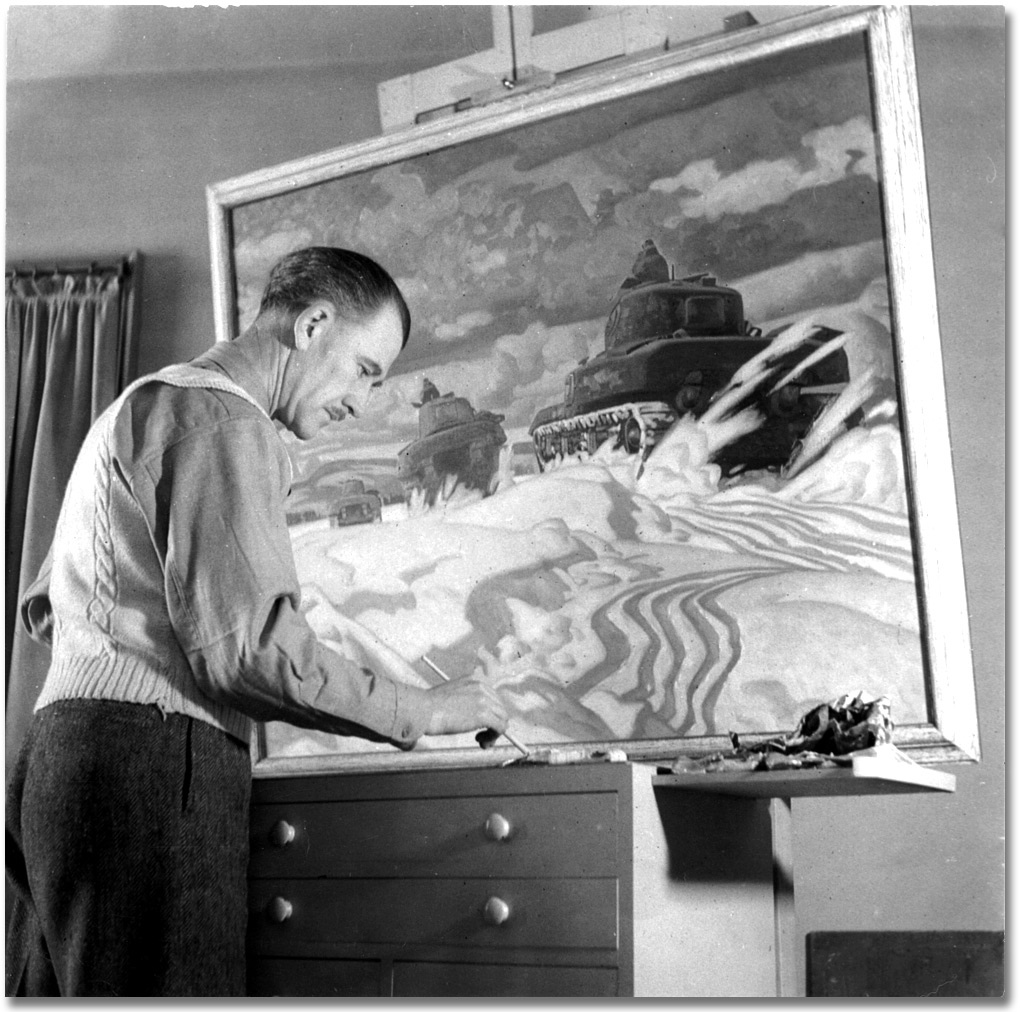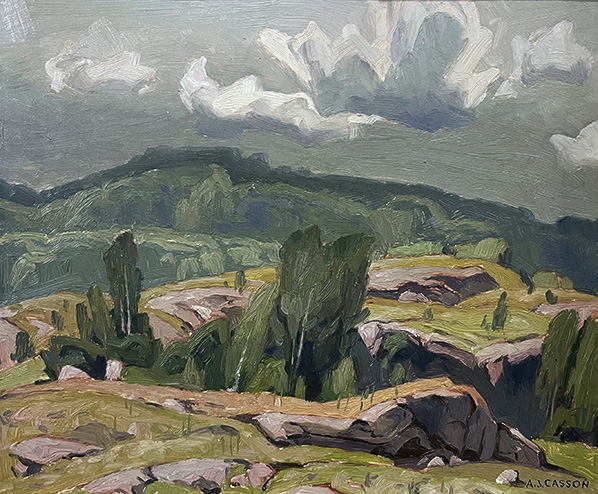A.J. Casson
Alfred Joseph Casson (1898-1992)– Artist Biography
Born in Toronto, Ontario, Alfred Joseph Casson started art studies at Ryerson School and later under John S. Gordon at the Hamilton Technical School when his family moved to Hamilton. His family moved back to Toronto in 1916 and he worked free lance and studied evenings at the Ontario College of Art, the Toronto Central Technical School under Alfred Howell, and classes under Harry Britton who first taught him watercolour techniques and introduced him to oil painting.
When the young A.J. Casson first took a position as design assistant to Franklin Carmichael at the firm of Rous and Mann, he could not have known the remarkable direction his career would take. The demanding but affable Carmichael became a friend, mentor and sketching companion. In fact, it was Carmichael who introduced Alfred Casson to members of the Group of Seven at Toronto’s Arts and Letters Club. The dedicated artist began to exhibit with the Group and became a natural successor to Frank Johnston when he left to pursue other interests.
He exhibited for the first time with the Ontario Society of Artists in 1921, and in 1923 his canvas “Clearing” was purchased by the National Gallery of Canada. Casson , Carmichael and F. H. Brigden formed the Canadian Society of Painters in Water Colour in 1925 “to encourage and foster the art of watercolour in Canada.” F. B. Housser wrote in the Year Book of Arts in Canada “Carmichael and Casson are painting in watercolours … giving to Canadian landscape a statement in watercolour as bold and untraditional as that which some of their associates have given it in oils.”
Most of Casson’s large canvases were done between 1926 and 1930 when he found his subject matter in the Haliburton Region and Lake Superior areas. It was about 1924 that Casson became interested in the Ontario village. He made many pencilled sketches of structural details which became a valuable reference for his larger studies in oils like “Anglican Church at Magnetawan” completed in 1933 and purchased by the National Gallery of Canada in 1936. In his depiction of the more settled areas of southern Ontario, A.J. Casson was deliberately seeking out subject matter that set his work apart from the preferred material of other Group of Seven members.
In addition to his dedication to excellence in his own work, A.J. Casson was instrumental in the formation of important Canadian art organizations such as the Canadian Society of Painters in Watercolour, the Canadian Group of Painters and the WWII War Artists Program. Vice President and Art Director for Sampson-Matthews Ltd. for almost 20 years, he was responsible for the technical development of programs in connection with reproduction of artists’ works carried out by the National Gallery of Canada, Canadian Pulp and Paper Association and Sampson-Matthews Limited. He did heraldic work which was reproduced by Sampson-Matthews Ltd. including armorial bearings of Canada and a series of landscapes.
There can be no doubt that over a long career, which spanned much of the twentieth century, Alfred Joseph Casson left an indelible mark on the Canadian art landscape.
Bio c/o: A Dictionary of Canadian Artists, Volume I: A-F, compiled by Colin S. MacDonald, Canadian Paperbacks Publishing Ltd, Ottawa, 1977
Honours:
1940 full member Royal Canadian Academy of Arts (1940 elected president)
1942 winner, national competition for designing poster for a Victory Bond
1948 Province of Ontario Award
1954 Gold medal for distinguished service to advertising in Canada
1957 Gold medal, University of Alberta
1967 Silver Centennial Medal
1969 RCA Medal
1973 Fellow, Ontario College of Art
1975 Honorary degree, University of Toronto
Officer of the Order of Canada
Artist Specialization: Alfred Casson’s strong design background shaped a unique painting style, characterized by graceful lines and carefully considered compositions. With the passing of time his style underwent a subtle change in which pattern became an essential element in his work.


